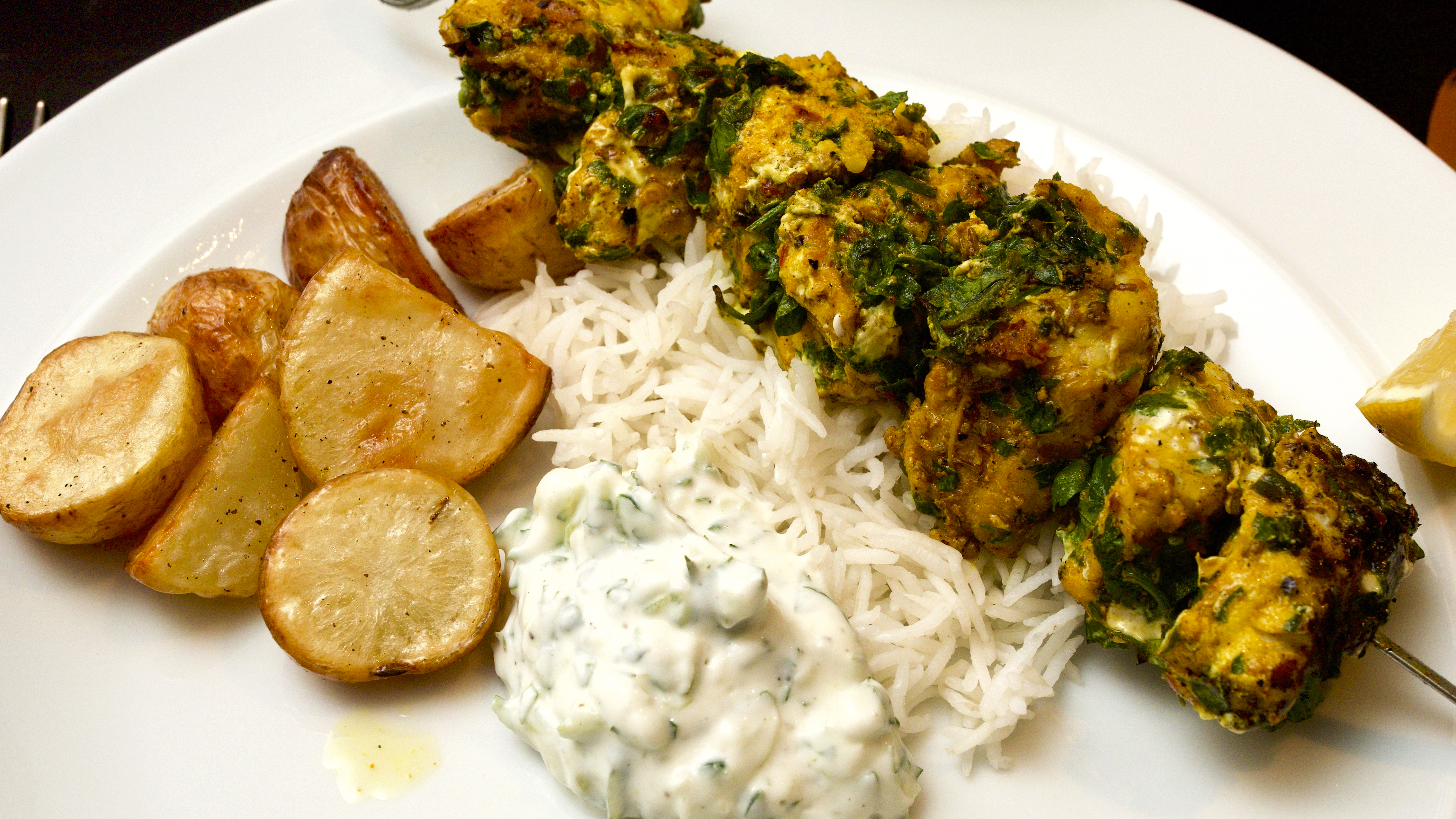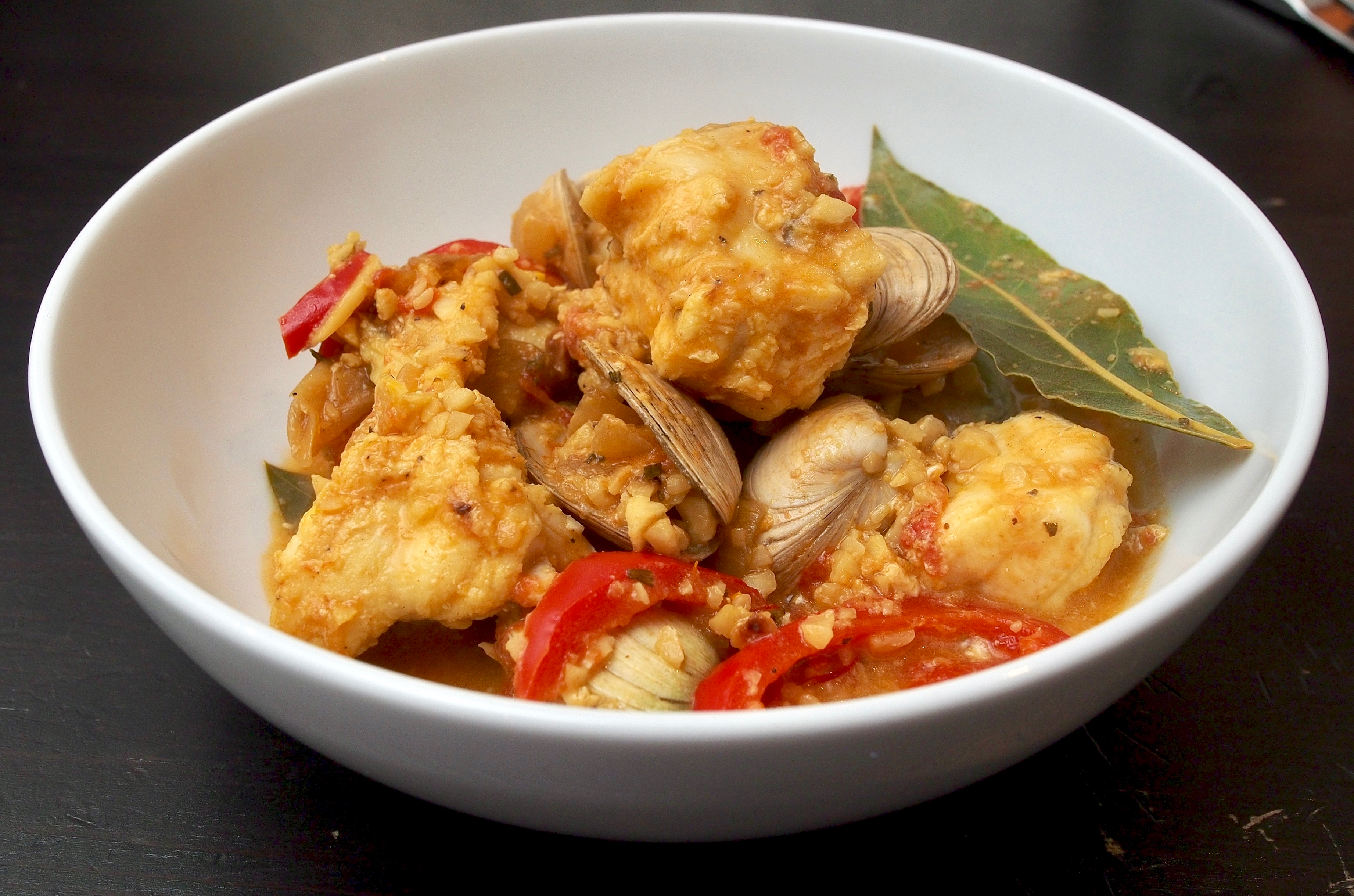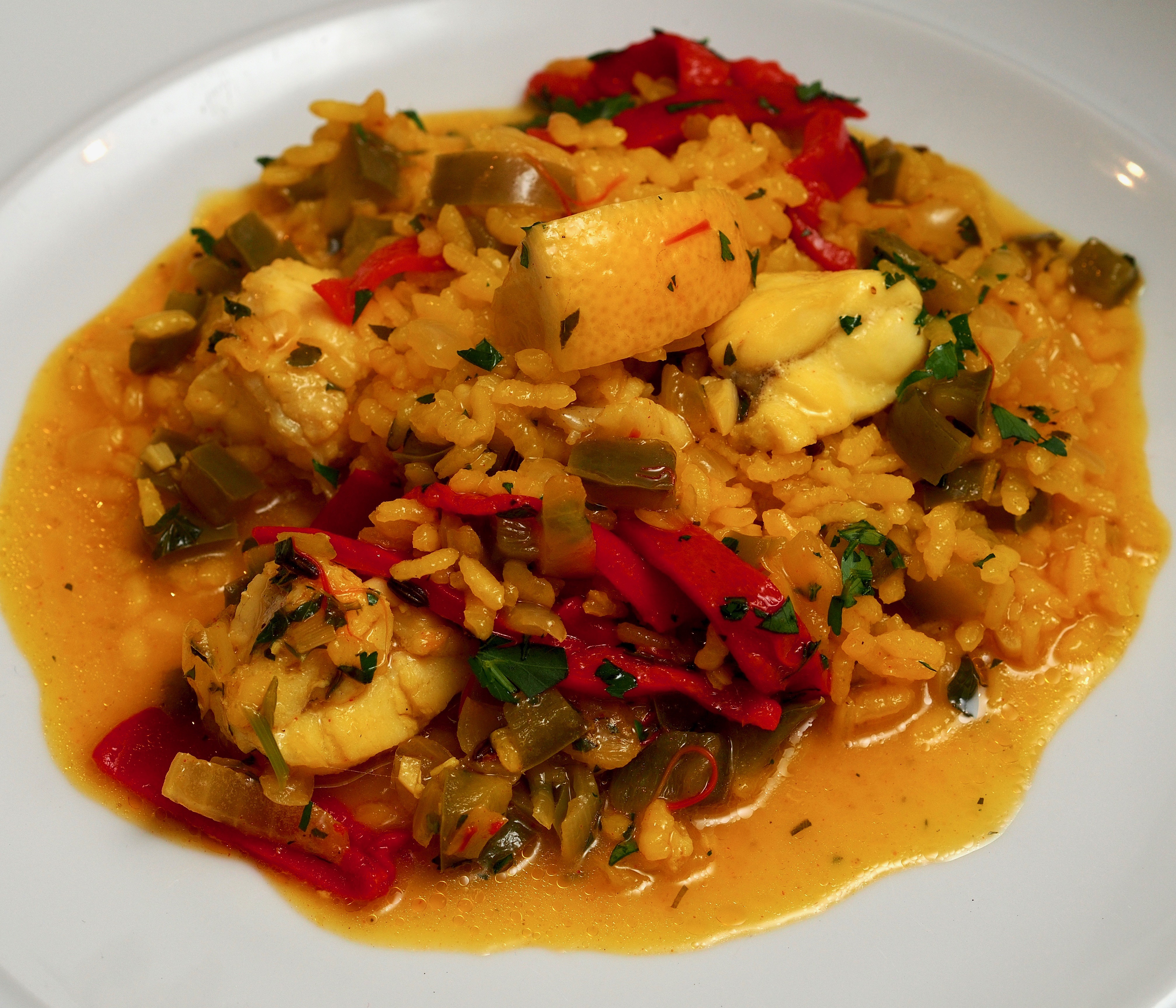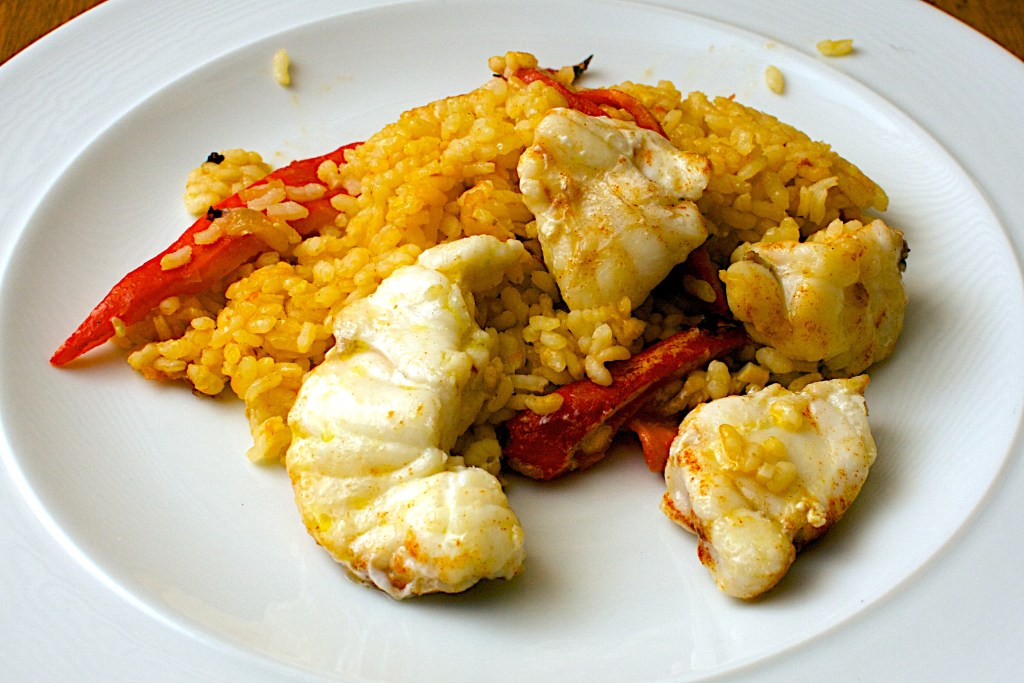
A surf-n-turf compromise maybe for the meat-eaters and such a delicious sauce to go with the fish. Looks a bit messy in the picture but it tastes delicious! We served with baby roast potatoes and greens.
Wine Suggestion: This begs for a youthful, oaked white like the textural, fresh and balanced Neudorf Tiritiri Chardonnay from Nelson in NZ. There’s both a finesse and a complexity to this wine with fresh fruits, hints of spice and … it may be the food influencing it, but we get hints of bacon and a meatiness. All bound together tightly and opening up gently in the glass.
Monkfish with mushroom & bacon sauce – serves 6
- 6 x 150g monkfish fillets, ask the fishmonger to remove the skin and membrane
- 3 tbsp plain flour
- 2 tbsp oil
- a knob of butter
- 6 rashers of smoked streaky bacon, chopped into small pieces
- 1 small onion, finely chopped
- 200g chestnut mushrooms, sliced
- 200ml crème fraîche
- juice of ½ lemon
- 1 tsp Dijon mustard
- 3 tbsp chopped parsley
Preheat the oven to 200C/180C fan/Gas 6 and line a tray with baking paper.
Season the monkfish with salt and pepper. Sprinkle the flour over a plate and dust the fish until coated, shaking off any excess.
Put a frying pan over a high heat and add the oil and butter. When the butter is foaming, add the fish fillets and fry for 2-3 minutes on each side or until sealed and lightly golden. Transfer to the paper-lined tray and pour over any buttery juice from the pan. Roast in the oven for 8-10 minutes or until cooked through.
Meanwhile, wipe the pan clean with kitchen paper to remove any flour, then add the bacon and fry over a high heat until crispy, then remove to a plate. Tip the onion into the pan and fry for a few minutes, then cover and reduce the heat and leave to cook for another 5 minutes. Remove the lid and turn the heat back up, add the mushrooms and fry for a few minutes until golden.
Add the crème fraîche, lemon juice and mustard with half the cooked bacon and half the parsley. Bring to the boil and bubble for a few minutes until reduced and slightly thickened. Season to taste with salt and pepper.
Slice each fish fillet into three and arrange on a platter. Spoon over the sauce and garnish with the rest of the bacon and parsley.
(Original recipe from Foolproof Cooking by Mary Berry, BBC Books, 2016.)









